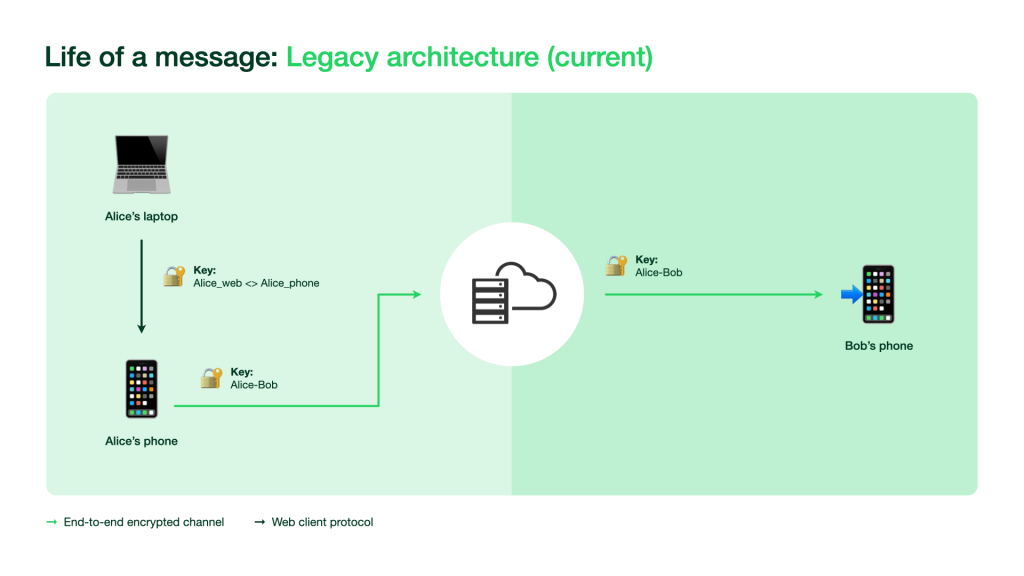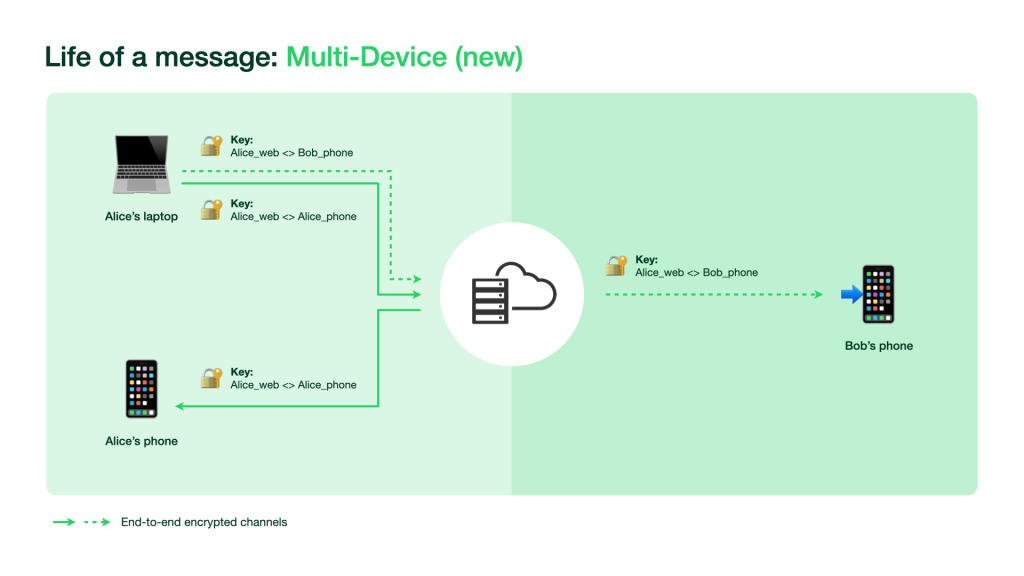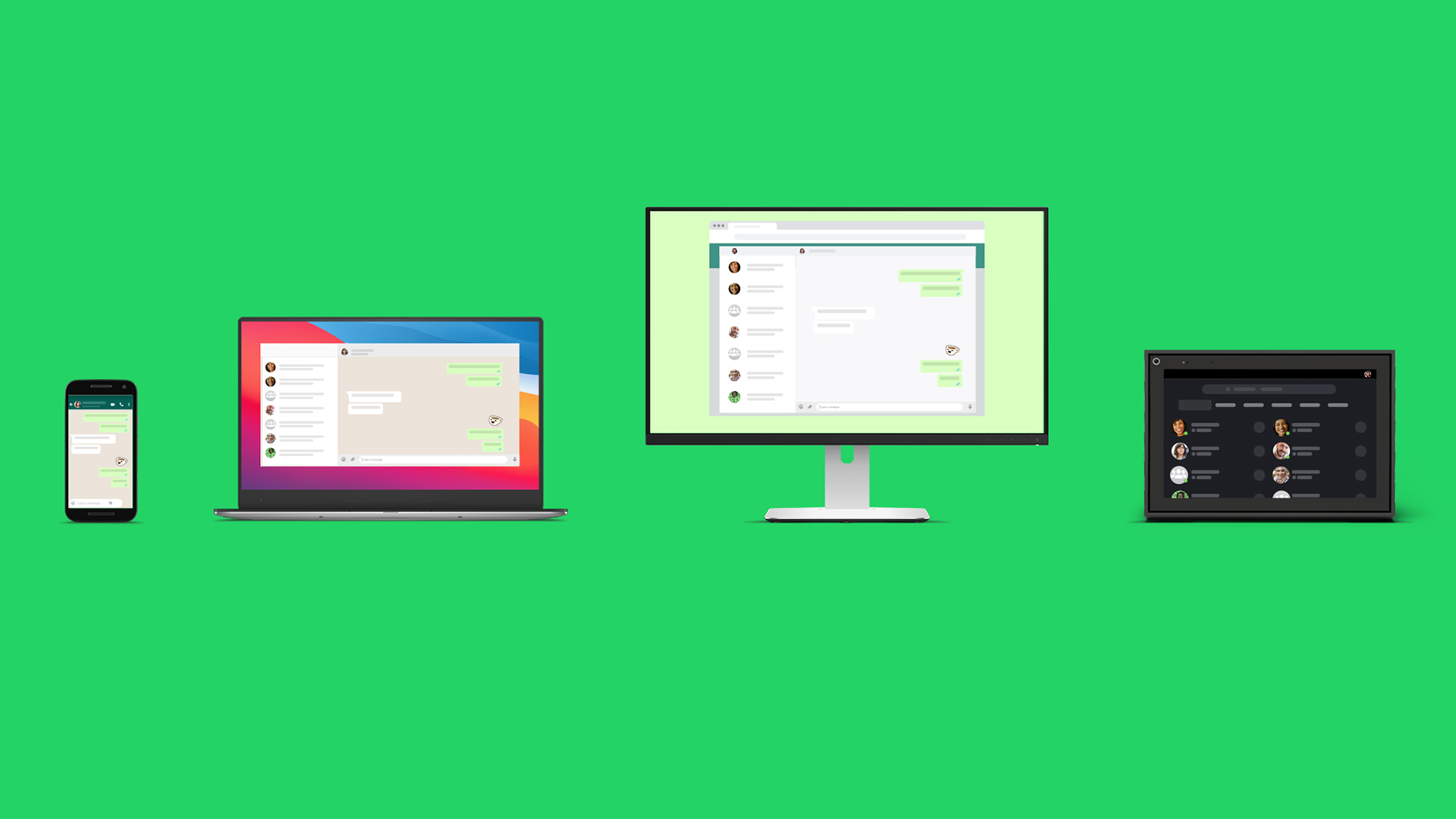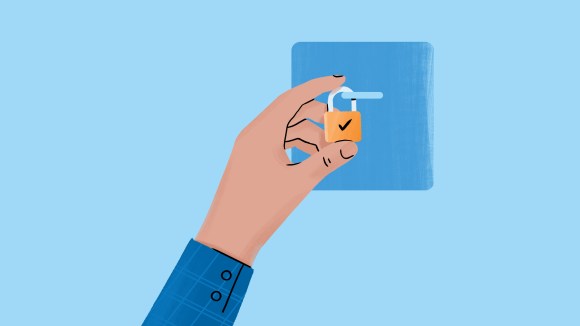For years, people have been asking us to create a true multi-device experience that allows people to use WhatsApp on other devices without requiring a smartphone connection.
Today, we’re announcing the rollout of a limited public beta test for WhatsApp’s updated multi-device capability.
With this new capability, you can now use WhatsApp on your phone and up to four other nonphone devices simultaneously — even if your phone battery is dead. Each companion device will connect to your WhatsApp independently while maintaining the same level of privacy and security through end-to-end encryption that people who use WhatsApp have come to expect. Importantly, we have developed new technologies to maintain end-to-end encryption while still managing to sync your data — such as contact names, chat archives, starred messages, and more — across devices.
To achieve this, we had to rethink WhatsApp’s architecture and design new systems to enable a standalone multi-device experience while preserving privacy and end-to-end encryption.
Taking smartphones out of the equation
The current WhatsApp experience for companion devices on web, macOS, Windows, and Portal uses a smartphone app as the primary device, making the phone the source of truth for all user data and the only device capable of end-to-end encrypting messages for another user, initiating calls, etc. Companion devices maintain a persistent secure connection with the phone and simply mirror its contents on their own UI.
This architecture makes it easy to deliver a seamlessly synchronized experience between a phone and companion device without compromising on security. However, it comes with some significant reliability trade-offs: By requiring the phone to perform all operations, companion devices are slower and frequently get disconnected — especially when the phone has a poor connection, its battery is running low, or the application process gets killed by the phone’s OS. It also allows for only a single companion device to be operative at a time, meaning people can’t be on a call in Portal while checking their messages on their PC, for example.
The new WhatsApp multi-device architecture removes these hurdles, no longer requiring a smartphone to be the source of truth while still keeping user data seamlessly and securely synchronized and private.
The challenge in accomplishing this was in maintaining the secure user experience across devices without having to store people’s private messages on our servers in new ways.
Meeting the security challenges of multiple devices
Prior to the introduction of multi-device, everyone on WhatsApp was identified by a single identity key from which all encrypted communication keys were derived. With multi-device, each device now has its own identity key.
The WhatsApp server maintains a mapping between each person’s account and all their device identities. When someone wants to send a message, they get their device list keys from the server.
We have also addressed the challenge of preventing a malicious or compromised server from eavesdropping on someone’s communications by surreptitiously adding devices to someone’s account. We use a combination of technologies to solve this: First, we have extended security codes to now represent the combination of all of someone’s device identities so that anyone and their contact can always verify all the devices they are sending messages to.
Second, in order to reduce the number of times that someone needs to perform identity verifications, we have developed and will roll out a technology called Automatic Device Verification. This system allows for devices to automatically establish trust between each other in a way that someone needs to compare another user’s security code only if that user reregisters their entire account, rather than each time they link a new device to their account.
Finally, we also give people additional control and protections over which devices are linked to their account. First, everyone can continue to link new companion devices by scanning a QR code from their phone. This process requires biometric authentication before linking where people have enabled biometric authentication on their phones. Finally, people will be able to see all the companion devices linked to their account as well as when they were last used, and will be able to log out of them remotely if needed.
Maintaining message privacy
When people message each other in a one-on-one chat, a pairwise encrypted session is established between each of the sender’s and recipient’s devices. WhatsApp multi-device uses a client-fanout approach, where the WhatsApp client sending the message encrypts and transmits it N number of times to N number of different devices — those in the sender and receiver’s device lists. Each message is individually encrypted using the established pairwise encryption session with each device. Messages are not stored on the server after they are delivered. For groups, we still use the same scalable Sender Key encryption scheme from the Signal Protocol.


Adapting voice and video protocols for multi-device, end-to-end encryption
When someone on WhatsApp makes a voice or video call:
- The initiator generates a set of random 32-byte SRTP master secrets for each of the recipient’s devices.
- The initiator sends an incoming call message (using the client-fanout approach described above) to each of the devices of the recipient. Each recipient’s device receives this message, which contains the encrypted SRTP master secret.
- If the responder answers the call from one of the devices, a SRTP encrypted call is started, protected by the SRTP master secret generated for that device.
The SRTP master secret persists in memory on the client device and is used only during the call. Our servers do not have access to the SRTP master secrets.
For group calls, the server randomly selects a participant device that is in the call (either the initiator or a device on which a user has accepted the call) to generate the SRTP master secret. That device generates the secret and sends it to other active participant devices through pairwise end-to-end encryption. This process is repeated, and the keys are reset whenever someone joins or leaves the call.
Keeping message history and other application states in sync across devices
We want to ensure that people have a consistent experience with WhatsApp no matter the device they are using. To achieve this, we synchronize message history as well as other application state data (such as contact names, whether a chat is archived, or if a message is starred) across devices. All of this data is synchronized and end-to-end encrypted between your devices.
For message history: When a companion device is linked, the primary device encrypts a bundle of the messages from recent chats and transfers them to the newly linked device. The key to this encrypted message history blob is delivered to the newly linked device via an end-to-end encrypted message. After the companion device downloads, decrypts, unpacks, and stores the messages securely, the keys are deleted. From that point forward, the companion device accesses the message history from its own local database.
Other application data requires more than an initial transfer from the phone. We also need an ongoing synchronization every time someone modifies their application state (e.g., when they add a new contact, mute a chat, or star a message).
To solve this, the WhatsApp server securely stores a copy of each application state that all of someone’s devices can access. To properly secure this, all the information, and even the metadata about the information (what kind of user data is stored or accessed), is end-to-end encrypted with constantly changing keys known only to that person’s devices.
How to try WhatsApp multi-device beta
We plan to initially test the experience with a small group of users from our existing beta program. We will continue optimizing performance and adding a few additional features before slowly rolling it out more broadly. Those who opt in can always opt back out.
For more information about the beta and to sign up, visit the WhatsApp Help Center.
For more information about WhatsApp multi-device, read our updated whitepaper.










